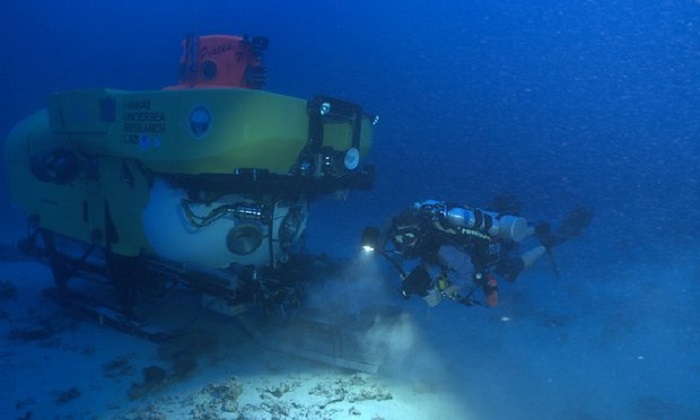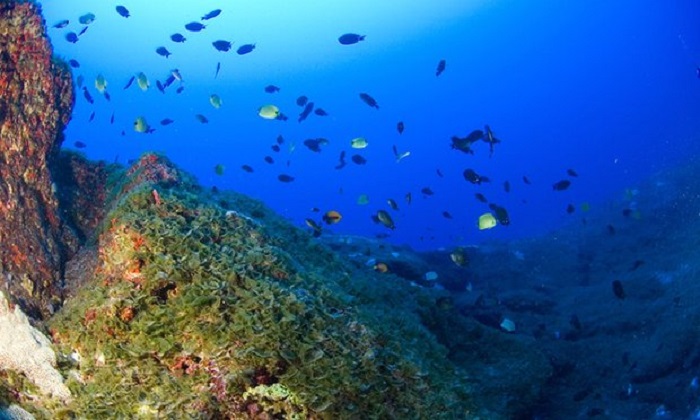While much is known about shallow, tropical coral habitats, the richness, diversity and ecological importance of these deep sea ecosystems, found at depths of 30-150 metres, has only recently been understood.
In one of the largest and most comprehensive studies of its kind, published on Tuesday in the journal PeerJ, the entire 2,590km Hawaiian archipelago was covered over two decades using a combination of submersibles, remote-operated vehicles, drop cameras, data recorders and advanced diving techniques.
A major focus of the study was to document extensive areas of 100% coral cover at depths of 90m (300 feet) or more off the islands of Maui and Kauai. Vast expanses of continuous coral cover were found extending for tens of square kilometres, dominated by stony, reef-building corals in the genus Leptoseris, a plate-like coral adapted for deepwater environments.
“These are some of the most extensive and densely populated coral reefs in Hawaii,” said Anthony Montgomery, a US Fish and Wildlife biologist and co-author of the study. “It’s amazing to find such rich coral communities down so deep.”
The study identified more than 70 species of macroalgae in extensive meadows that support unique communities of fish and invertebrates. Both corals and algae depend on sunlight for photosynthesis, and the study attributed the existence of many of the deep reef habitats to exceptionally clear water.
“We found that the diversity of macroalgal species actually peaked at around 90m,” said Heather Spalding of the department of botany at the University of Hawaii at Mānoa and a co-author of the study. “These extensive algae meadows represent a major component of the deep-reef communities, and play a fundamentally important role in the overall ecology.”
The team of 16 researchers also found that the rate of endemism – species that exist nowhere else on the planet – increased substantially on the deep reefs. While only 17% of the fish surveyed at depths less than 30m are endemic to the Hawaiian Islands, more than half of the species below 70m are endemic. This rate increased even more in the Northwestern Hawaiian Islands, where 100% of the fish are found only in Hawaii.
“The extent of fish endemism ... is astonishing,” said Randall Kosaki, National Oceanic and Atmospheric Administration’s deputy superintendent of the Papahānaumokuākea marine national monument and a co-author of the study. “We were able to document the highest rates of endemism of any marine environment on Earth.”
The study was not without its challenges for the multidisciplinary team of scientists including geologists, biologists, and botanists: Hawaii’s “twilight zone” reefs are deeper than conventional divers can safely venture, and also too shallow for most submersible vehicles to operate.
The research group solved the problem by combining strategies: theymapped the seabed with sonar, towed cameras underneath boats along transect lines, sent remote operated cameras out and deployed divers using rebreather systems that allowed them to stay under longer alongside submersible vessels.

“Free-swimming divers and submersibles don’t often work side-by-side on scientific research projects,” said Richard Pyle, Bishop Museum researcher and lead author of the publication. “Submersibles can go much deeper and stay much longer, but divers can perform more complex tasks to conduct experiments and collect specimens. Combining both together on the same dives allowed us to achieve tasks that could not have been performed by either technology alone.”
The results have important implications for conservation management, the authors say, with deep coral reefs potentially serving as a refuge for species from shallow coral reefs.
“With coral reefs facing a myriad of threats, the finding of extensive reefs off Maui provides managers with a unique opportunity to ensure that future activities in the region, such as cable laying, dredging dump sites, and deep sewer outfalls, do not irreparably damage these reefs,” said Kimberly Puglise, an oceanographer with NOAA’s National Centers for Coastal Ocean Science.
















































